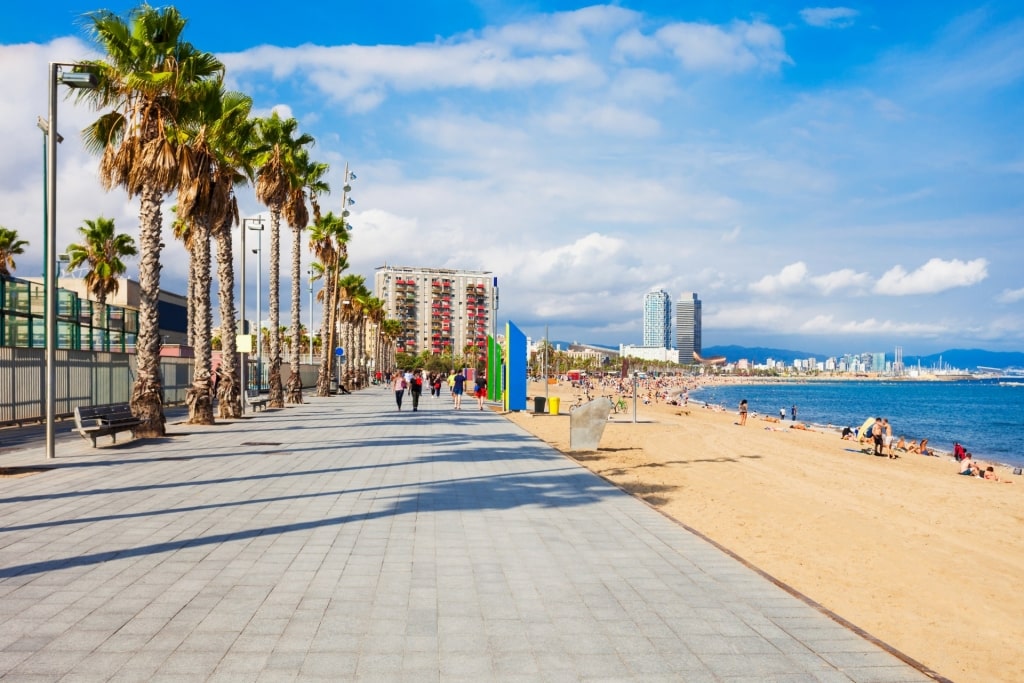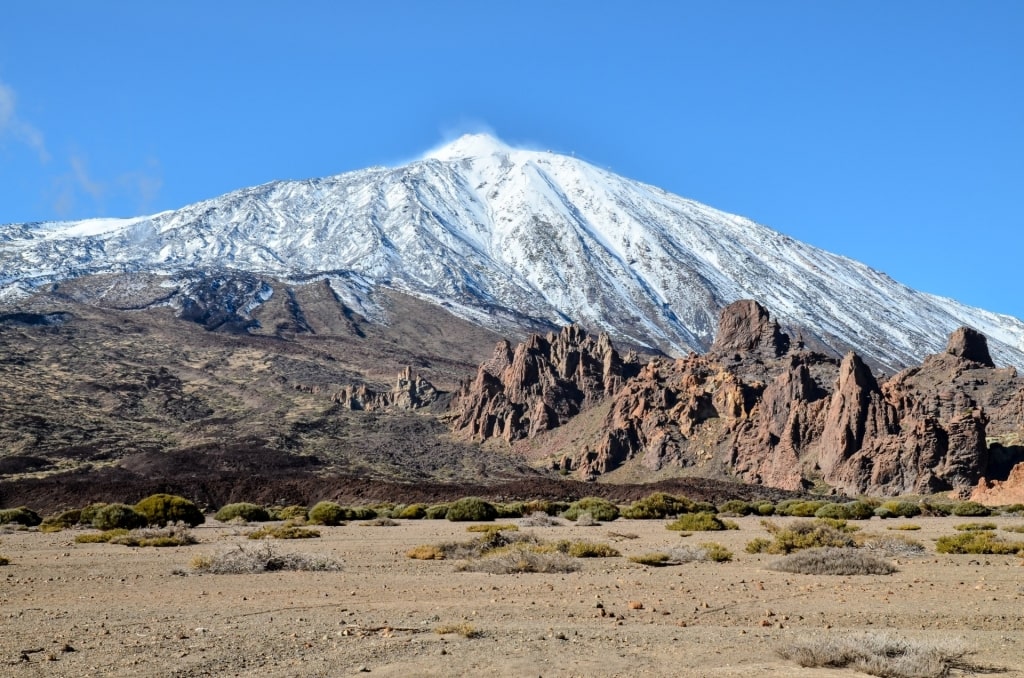The best time to visit Spain really depends on which region you want to see, and your reason for going there, be it sun and sea, culture, or all of the above.
Spain spans the mainland on the Iberian peninsula, the Balearic Islands in the Mediterranean, and the subtropical Canary Islands in the Atlantic. The country really is a year-round destination.
The Canary Islands bask in near-permanent balmy temperatures, while the Costa del Sol, along the coast of Andalucia in the south, enjoys 300 sunny days per year. Cities like Barcelona and Valencia have year-round cultural and culinary appeal, both in and out of the busy season. You really can’t pick a bad time to go to Spain.
Visiting Spain By Season
Summer

Barceloneta Beach, Barcelona
All of Spain, including the islands, enjoys a long, hot summer, generally regarded as June, July, and August. Temperatures vary according to the region you’re visiting.
Summer highs in Bilbao, in the cooler north, average 69°F (20.5°C), whereas hotter Barcelona can average 77°F (25.1°C) in August, with daily highs of more than 86°F (30°C).
In the south, Malaga might experience highs of 88°F (31°C), although inland, Seville can bake in 104°F (40°C).
The Canary Islands, much closer to North Africa than the Spanish mainland, have a different climate. Typical highs in summer hover around 84°F (29°C), tempered by sea breezes.
Summer in Spain is a time to head for the beach, slow right down, take a siesta in the heat of the day if time permits, and plan your sightseeing ahead, as popular landmarks like the Sagrada Familia in Barcelona and the Alhambra in Granada will be busy.
Fall
Fall is one of the best seasons to go to Spain. During fall in Spain, the summer crowds are thinning out. In September and October, the Mediterranean is still deliciously warm for swimming (the Atlantic in the north less so).
By November, temperatures are cooler, but the south in particular can see bright, sunny days, perfect for exploring Spain’s natural beauty via hiking, sightseeing, and walking on the beach.

Montes de Malaga Natural Park
The greener north, however, is cooling down now. By November, average daily temperatures are just 56°F (13.2°C) in Santander.
In the Canary Islands, temperatures average a consistent 77°F (25°C) until November. September and October are still pleasant months for swimming in the sea.
Winter
Spain’s winters, from December to February, are usually mild with much-needed rain. In the mountains of the Sierra Nevada in the south and the Pyrenees to the north, precipitation falls as snow.
Christmas and New Year aside, this is effectively the low season, when some bars and restaurants may shut down in the smaller resorts. Winter, though, is a wonderful time to visit Spanish cities like Barcelona, Malaga, and Valencia, as you’ll be able to tour the best museums and galleries with ease.
Winter is not such a good time to visit the Balearic Islands; while Mallorca, the biggest, is a year-round destination, Ibiza and Menorca are very quiet off-season.
Winter is when the Canary Islands attract a lot of northern Europeans fleeing the cold, dark days. You should see average highs of 65.6°F (18.6°C), and the beaches will be busy.
On Tenerife, the peak of Mount Teide, Spain’s tallest mountain, will usually be draped in snow, a spectacular sight against a deep blue sea and sky.

Mount Teide, Tenerife
February is Carnival time in Santa Cruz de Tenerife, widely seen as one of the most lavish celebrations in Europe. February is also the almond blossom season.
Spring
Early May is possibly the best time to go to Spain, as it’s still shoulder season but the sea is warming up and the weather should be glorious. Visiting Spain in March and April promises a pleasant experience, too. Expect temperatures of around 70.5°F (21.4°C) in Seville in April and a cooler 59°F (15°C) in Santander.
The Balearic Islands are beautiful in early spring, when fields are strewn with wildflowers and the sleepiness of winter is shaken off.
Read: Spain Travel Tips
When Is Rainy Season?
Rainy season in Spain is from November to February. Prolonged periods of rain are unusual in Southern Spain, though.
The north can see rain at any time of year, with December to February and then April the wettest months; December and January can see 13 days of rain.
In the Canary Islands, rainy season is from October to February, with December, the wettest month, receiving a modest average of 1.2 inches (30mm).
When Is High Season?
High season in mainland Spain and the Balearic Islands is summer and the months on either side, from late May to mid-September. July and August are especially busy, as these are the months when the Spanish take their holidays and head for the beach.
Popular cultural sights are busy, too, and may have time-restricted entrances, so plan ahead. Prepare for intense heat, especially inland; Seville and Cordoba can be extremely hot on a summer’s afternoon.
High season in the Canary Islands is both summer and winter; summer for guaranteed sunshine, and winter for northern European vacationers looking for a warmer climate within easy reach of home.
When Is Shoulder Season?
Shoulder season in Spain in terms of visitor numbers is April, May, September, and October, although many would argue that this is the best time to go. Spain’s season is, without a doubt, becoming more spread out over the year.
These are the better months for hiking in Spain, and easier for sightseeing in terms of the heat. Note that Easter is a big event in Spain, and Holy Week is a wonderful time to be there to see the solemn processions.

La Sagrada Familia, Barcelona
When Is Low Season?
Low season in Spain is from late November to late February, the coolest, rainiest months, with the exception of Christmas, New Year’s, and Carnival. This is still a good time to go, though, particularly if your focus is on sightseeing. In the Canary Islands, low season is January and February, when the weather is less predictable.
Experience the rich cultural heritage, diverse landscapes, and vibrant and lively cities of this amazing country. Visit our website to browse our cruises to Spain.


